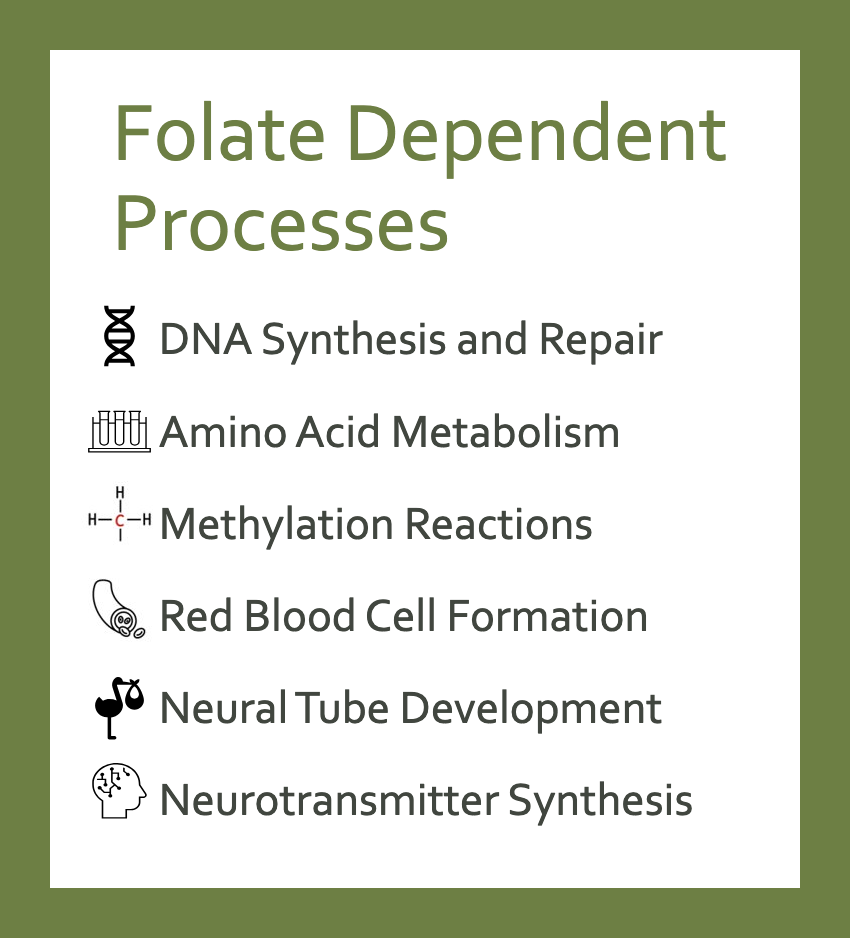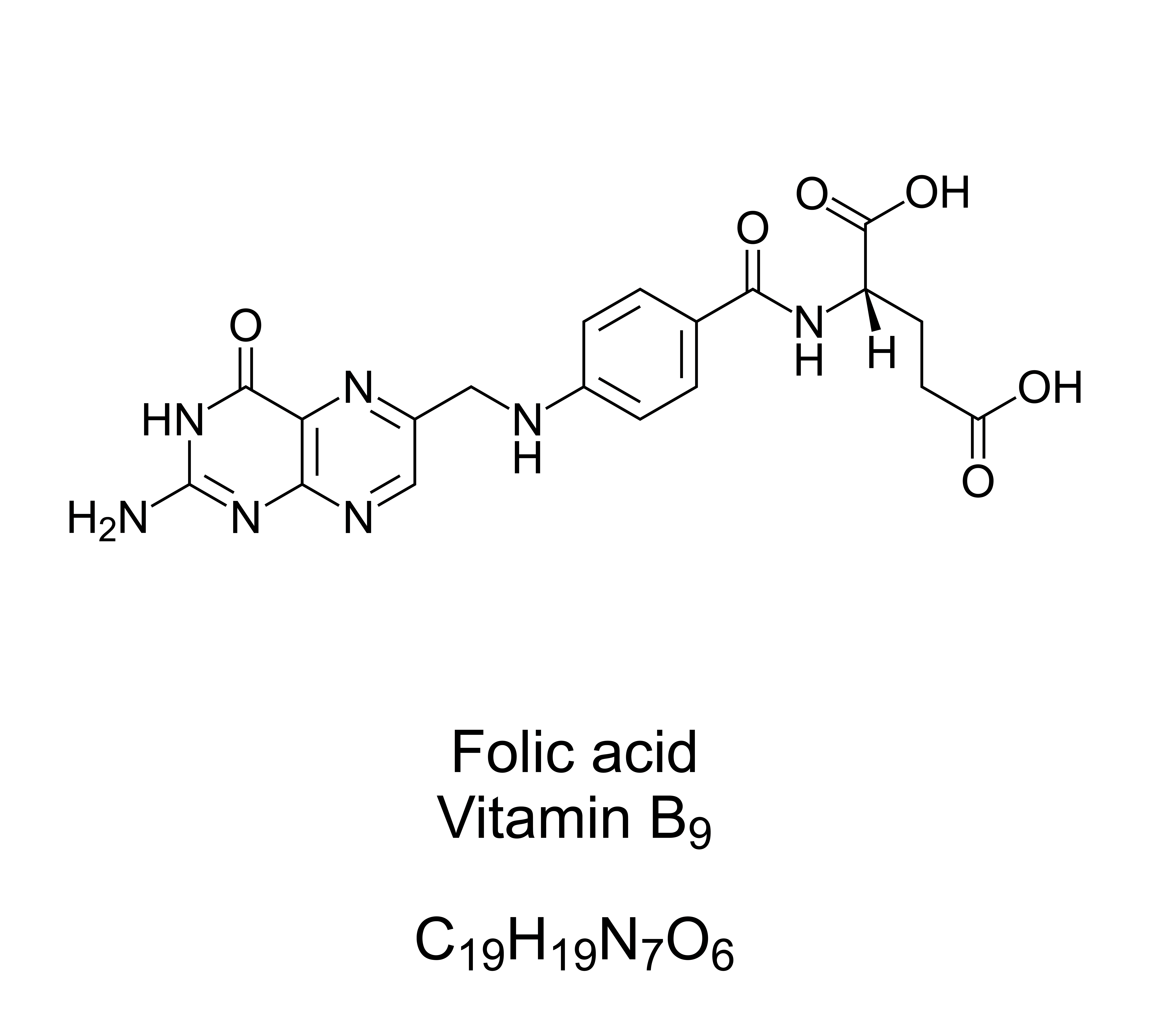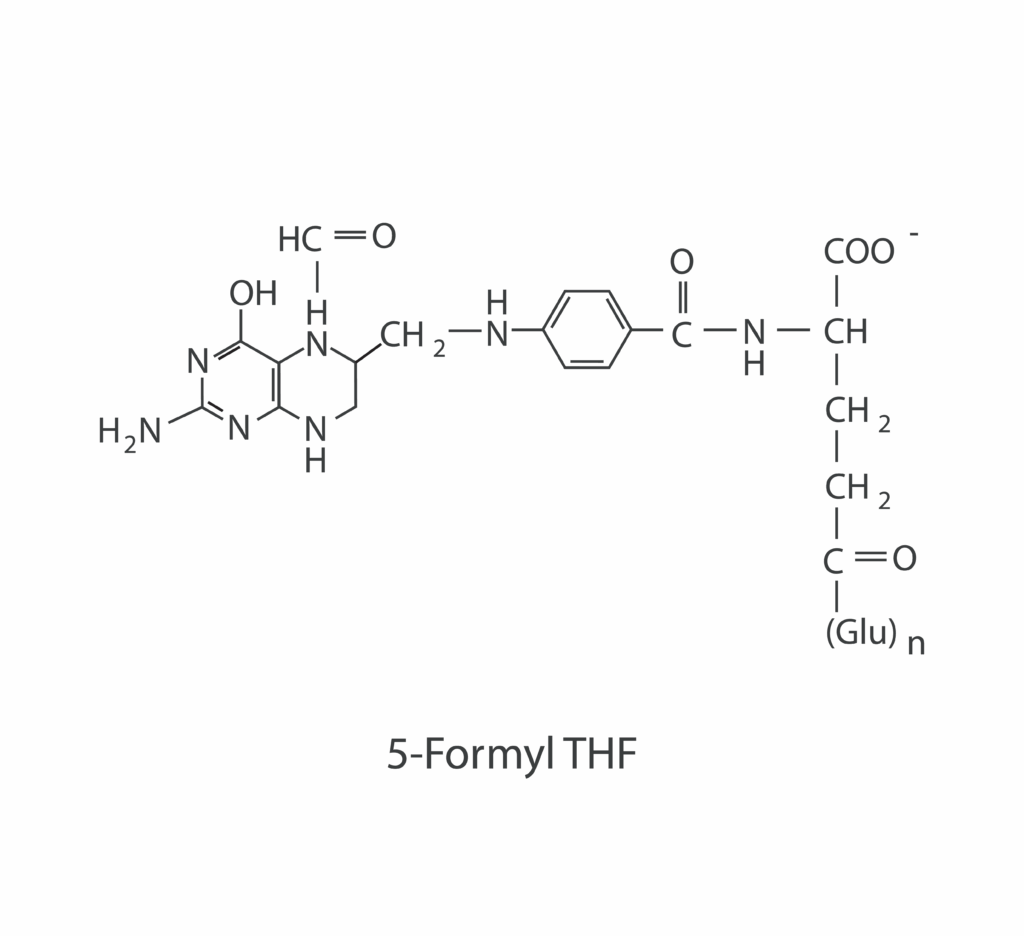Forms of Folate in Dietary Supplements

Folate is a general term used to describe many different forms of vitamin B9. It is an essential water-soluble vitamin that plays a crucial role in many bodily functions, including DNA synthesis, DNA repair, cell division, and maintaining healthy red blood cells. It is particularly important for women of childbearing age as it helps prevent neural tube defects in the developing fetus.
Folate is found naturally in plant foods where it is present in up to five different forms1:

• 5-methyl-Tetrahydrofolate (5-MTHF)
• 5-formyl-THF
• 10-formyl-THF
• Tetrahydrofolate (THF)
• 5,10-methylene-THF
Sources of Folate





High sources of folate can be found in plants like collard greens, turnip greens, spinach, broccoli, beans, citrus fruits, and some algae, each providing various levels of formyl and methyl folates. Supplements that combine more than one plant source can offer a full spectrum of folate forms, covering the wide range of needs for folate metabolism.
The need for a variety of folate forms has been studied in relation to depression, autism, autoimmune issues, and aging. In each of these conditions, the primary folate receptor may be blocked, requiring the use of alternate folate receptors and transport mechanisms, some of which have a higher affinity for formyl forms of folate.2
Folate Supplement Considerations
Various dietary supplement folate products are available. Most formulas contain isolated, synthetic methylated folate. While potentially effective, these supraphysiological dosed supplements carry the potential to mask B12 deficiency or push sensitive patients into hypo- or hyper-methylated states. Supplements derived from natural, food-based folate sources may support a more balanced intervention, and offer multiple forms including both methyl and formyl folate.
Food folate supplements are typically lower dose, and less concentrated than isolated synthetics. Still, they are often preferred by those who desire supplementing vitamins and minerals in a form found in nature, with their whole-food matrix of naturally occurring nutrients and phytoactive components.
Folic Acid

Folic acid is a synthetic form of folate commonly used in dietary supplements and fortified foods. It is the most widely available form of vitamin B9, the most stable form, and the most well-studied. Folic acid is not found naturally in food but is used to fortify grains, such as bread, pasta, and cereals. The U.S. government began fortifying foods with folic acid in 1998 as part of a public health initiative to reduce the risk of neural tube defects (NTD). This fortification program has successfully reduced, but not eliminated, the incidence in the general population.
Folic acid is very stable and easily absorbed, but it must undergo reduction and methylation to become the active form, 5-Methyltetrahydrofolate (5-MTHF). This conversion process requires two enzymes: dihydrofolate reductase (DHFR) and methylenetetrahydrofolate reductase (MTHFR). However, variations in the genes that code for these enzymes are quite common in the population. These variations (single nucleotide polymorphisms, or SNPs) can affect how efficiently those enzymes convert folic acid into 5-MTHF, leading to unmet folate needs and health consequences in some. While fortification has reduced the incidence of NTD, there are emerging concerns about the accumulation of unmetabolized folic acid (UMFA) in the bloodstream, especially in individuals with genetic variations.3
5-Methyltetrahydrofolate (5-MTHF)

5-MTHF, sometimes called methyl folate, can also be synthetically derived for supplement use. It is gaining popularity due to the increased awareness of DHFR and MTHFR gene variants. In such cases, taking a supplement that contains active folate can help bypass the need for conversion. The efficiency and safety of 5-MTHF has been well established in the literature,3 but the question of whether high doses interfere with uptake of natural sources remains to be answered.
Folinic Acid (5-Formyltetrahydrofolate)

Folinic acid (5-formyl THF) is another form of folate found in dietary supplements. It is more bioavailable than folic acid, as it can be readily converted into the active 5-MTHF form without needing the same enzymatic conversion that folic acid requires. While it is not as well-known as folic acid or 5-MTHF, folinic acid has been used in medical treatments, particularly in cases of cerebral folate deficiency (CFD) associated with depression, autism, autoimmune issues, and aging, and during chemotherapy to mitigate side effects.2,4 Because folinic acid is a formyl folate, the above uses support the case that multiple forms are needed in the diet.
Folate Clinical Takeaways
Folate is essential to all aspects of life, and a daily supply is essential for biological processes to run smoothly. While food is the best source of folate and other nutrients, the standard American diet of processed and refined foods leaves the population to rely mostly on folic acid from fortified grains and cereals as their source. Whole foods provide a full spectrum of folate forms that work together to support the body’s needs in a balanced way. However, with the known incidence of genetic variations that slow the activation of folic acid, many people may benefit from supplementation with the active form or a whole-food form that supplies a full spectrum of natural folates to fill the nutritional gap.
Did you know WholisticMatters is powered by Standard Process? Learn more about Standard Process’ whole food-based nutrition philosophy.
- Gorelova V, Ambach L, Rébeillé F, Stove C, Van Der Straeten D. Folates in Plants: Research Advances and Progress in Crop Biofortification. Front Chem. 2017 Mar 29;5:21. doi: 10.3389/fchem.2017.00021. PMID: 28424769; PMCID: PMC5372827.
- Rossignol DA, Frye RE. Cerebral Folate Deficiency, Folate Receptor Alpha Autoantibodies and Leucovorin (Folinic Acid) Treatment in Autism Spectrum Disorders: A Systematic Review and Meta-Analysis. J Pers Med. 2021 Nov 3;11(11):1141. doi: 10.3390/jpm11111141. Erratum in: J Pers Med. 2022 Apr 29;12(5):721. doi: 10.3390/jpm12050721. PMID: 34834493; PMCID: PMC8622150.
- Menezo Y, Elder K, Clement A, Clement P. Folic Acid, Folinic Acid, 5 Methyl TetraHydroFolate Supplementation for Mutations That Affect Epigenesis through the Folate and One-Carbon Cycles. Biomolecules. 2022 Jan 24;12(2):197. doi: 10.3390/biom12020197. PMID: 35204698; PMCID: PMC8961567.
- Pan LA, Martin P, Zimmer T, Segreti AM, Kassiff S, McKain BW, Baca CA, Rengasamy M, Hyland K, Walano N, Steinfeld R, Hughes M, Dobrowolski SK, Pasquino M, Diler R, Perel J, Finegold DN, Peters DG, Naviaux RK, Brent DA, Vockley J. Neurometabolic Disorders: Potentially Treatable Abnormalities in Patients With Treatment-Refractory Depression and Suicidal Behavior. Am J Psychiatry. 2017 Jan 1;174(1):42-50. doi: 10.1176/appi.ajp.2016.15111500. Epub 2016 Aug 13. PMID: 27523499; PMCID: PMC10171090.







